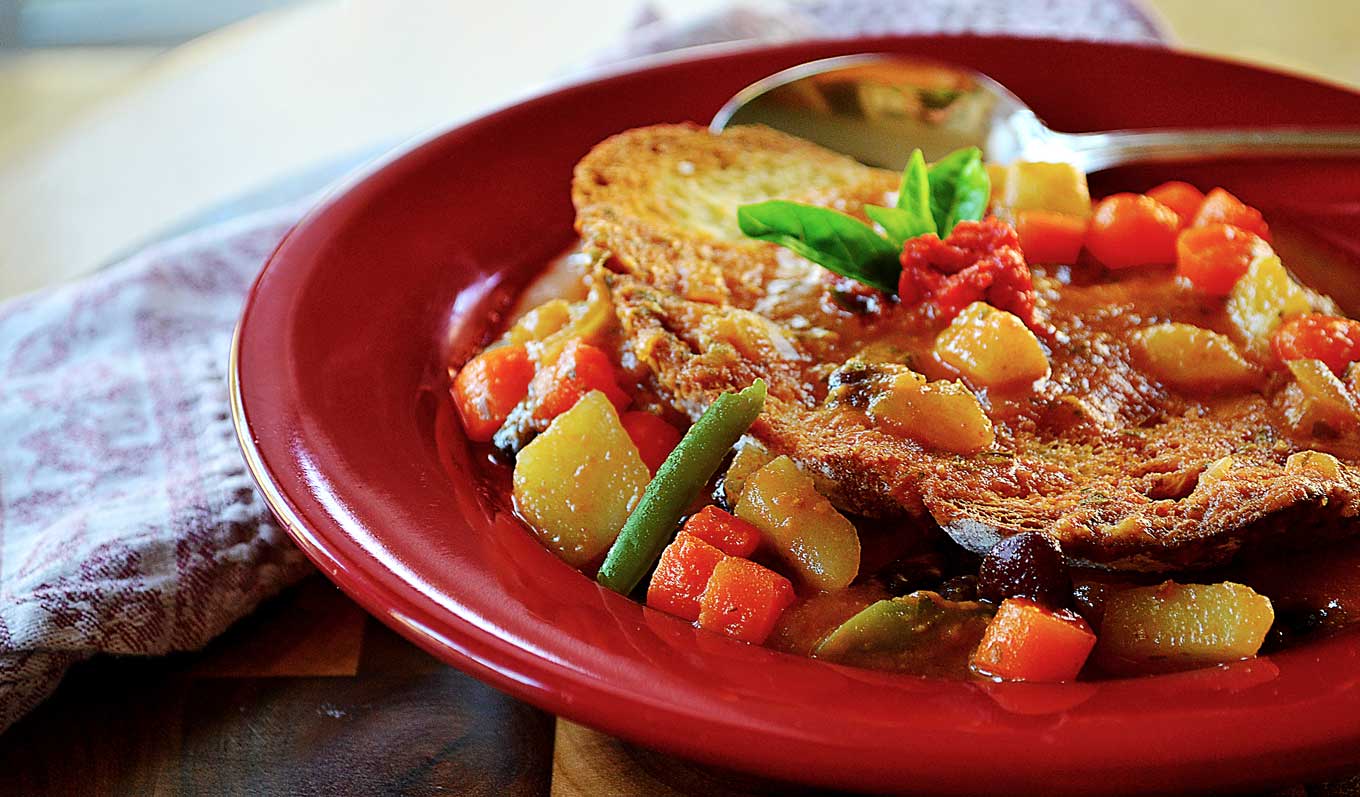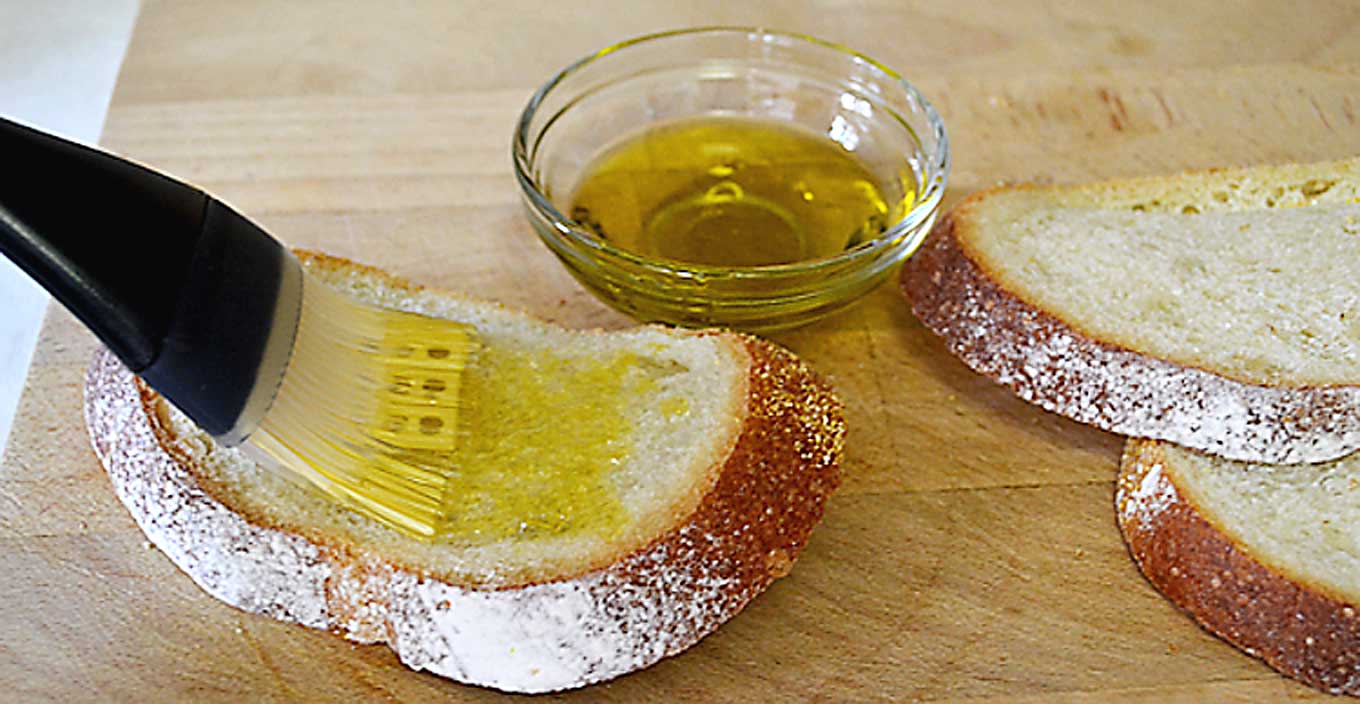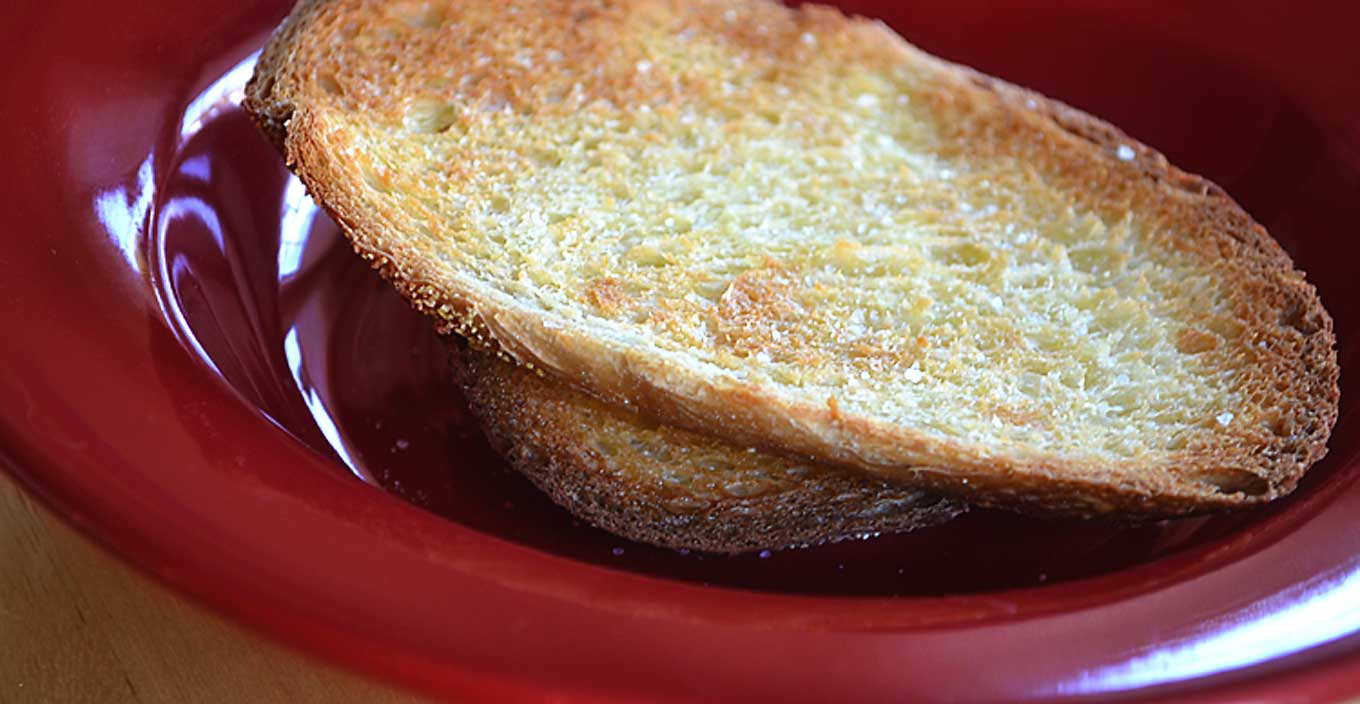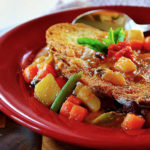
Recycling Bread? Absolutely. Lately I find myself treating bread like gold, even when it’s past its prime. I attribute this to a crusty gourmet loaf costing more money than seems reasonable for maybe 12 slices of bread. Throwing any of it away is clearly out of the question.
Thankfully, rustic cuisine is well-equipped at taking slices of bread past their peak and turning them into something worth savoring. If you were to walk into my kitchen on any given day, on my counter you would often find a cookie sheet covered with old, hard slices of bread getting even older and harder. Sure, I turn some into breadcrumbs, but once my breadcrumb glass jar has had its fill, it is time to explore other options.
I follow the lead of Tuscans, who excelled at creating magic out of old bread out of necessity. Since salt was heavily taxed in Tuscany at the beginning of the 20th century, rural farmers considered it too precious a commodity to use for baking. Instead they reserved it for its absolutely essential role in curing meat and making cheese. Since salt is what holds the moisture in bread and keeps it soft, its absence caused it to dry out within a day. Considering that Tuscans baked their bread only once a week at the community ovens, it left them with six days of figuring out how to eat bread in various stages of decline.
Out of these rather bleak circumstances came many delicacies.
One of my favorites is called bread soup, a savory vegetable medley that uses thin slices of old bread as a heartier, stick-to-your-ribs substitute for pasta. The heat and moisture of the soup, coupled with the thinness of the bread slice, softens even the hardest of slices by the time a piping hot soup can be consumed. Fresh bread also can be used, as long as it’s broiled or grilled first.
The version I tend to make most often uses pistou, a paste made of garlic, basil, tomato paste and Parmigiano Reggiano. I love it because the bread softens the strong flavors of the garlic and basil and provides a most satisfying meatiness to the soup. Together, they create a perfect balance and a satisfying meal to boot.
You can use a variety of ingredients to make this soup, depending on what you have on hand. I recently prepared a version that used cabbage, fontina cheese and chicken broth instead of the vegetables, beans and pistou, and it was absolutely fantastic. Whatever ingredients you use, resist the temptation to drown the bread. You want it to retain some of its texture and consistency so that the soup eats more like a meal.
Another favorite is peasant cake, which uses milk-soaked stale bread for its batter. To turn it up a notch, you can use sugar cookies, or a mixture of the two. It is a rustic Italian classic, which means there are about 23 million versions – one for every household in Italy! I’m sharing my mother’s version, which I could never stop eating when I was a child. Rich with the flavor of cocoa, it has the moist and dense consistency of bread pudding. When I have friends over for brunch, I often make it in lieu of a coffee cake.
I have one final thought: better quality fresh bread makes for better quality stale bread. It may sound a bit silly because we are talking about stale bread after all, but its quality does make a difference. I prefer the fresh bread found in bakeries and in the bakery section of local supermarkets. Better yet, make your own bread with flour, yeast, salt and water. (More on that in a future column.) You’ll know you’re working with high-quality bread when it holds its shape and remains springy to the touch when it’s been soaked in water, broth or milk.
Treating stale bread as precious has become second nature to me. The only thing I won’t do is hang it around my neck.
making pistou & bread soup
Bring 10 cups of water to a boil with 2 tablespoons of sea salt and 2 cups each of diced carrots, peeled potatoes and yellow onions. Once the water boils, turn the heat down so that the liquid gently simmers and cook for 20 minutes.
Then add 2 cups of green beans and fresh-cracked pepper to taste. Continue to cook the soup on a gentle simmer for an additional 15 minutes or so, or until the green beans are cooked through. Taste for seasoning and add a little more salt if needed.
As the vegetables are simmering away, prepare the pistou.
Set 4 tablespoons or so of the pistou aside in a small bowl for serving. Once the soup is ready, ladle 2 cups of its liquid into a deep medium-sized bowl and add the pistou. Stir thoroughly until the pistou dissolves, and then pour back into the soup pot and mix thoroughly one last time.
As the soup is cooling, brush thin slices of white (or whole wheat) crusty bread with olive oil.

Grill or broil them so that they are a nice golden color and become slightly crispy. Place 2 slices of bread, one on top of each other, in each soup bowl you are serving.

Spoon the soup around the bread and just a little over the top slice. Then add a small dollop of pistou and a few drops of extra virgin olive oil. Makes 6 to 8 servings.





Leave a Reply